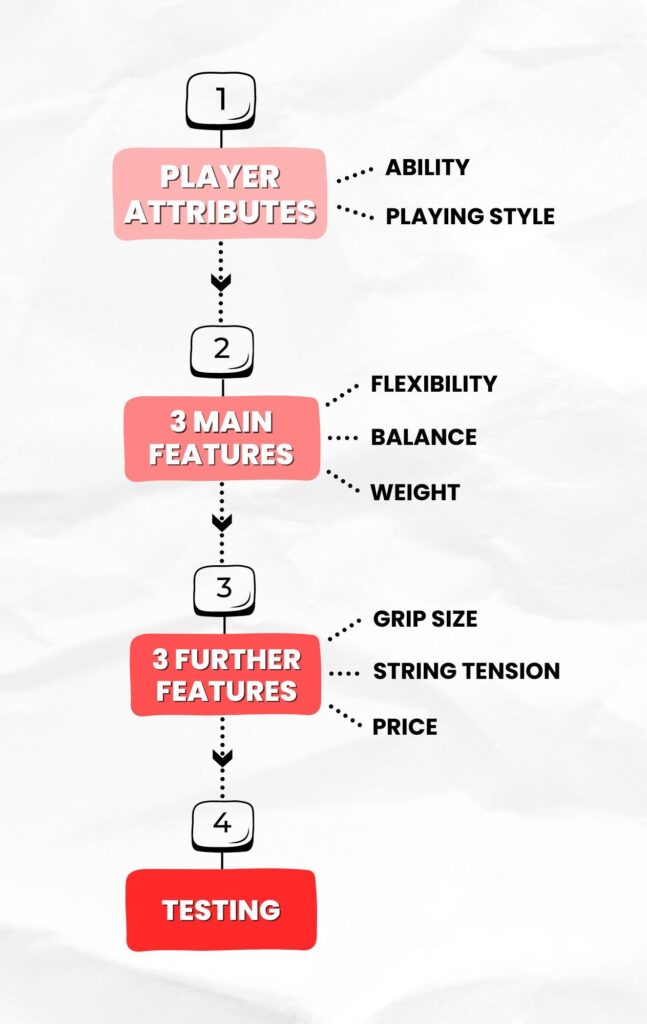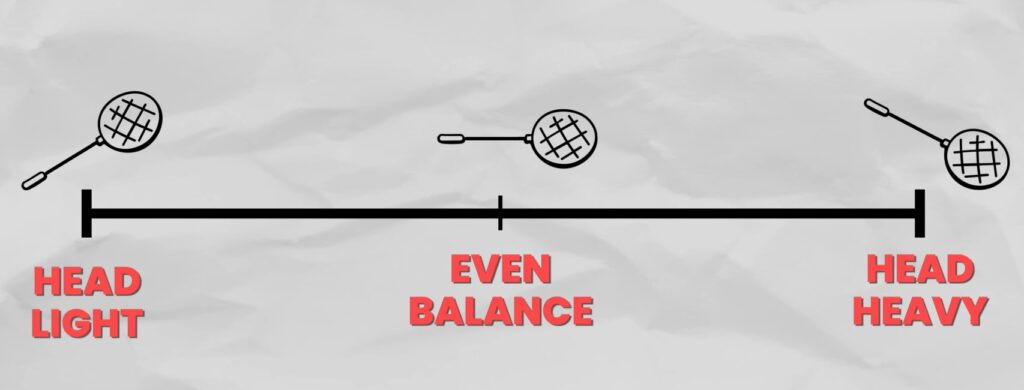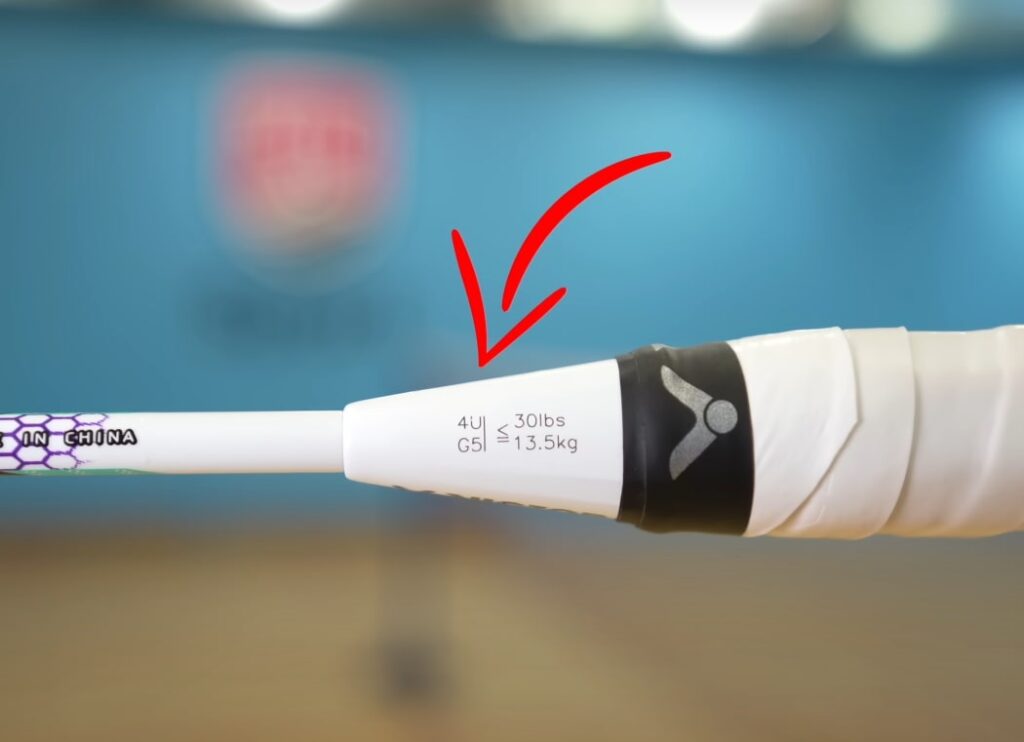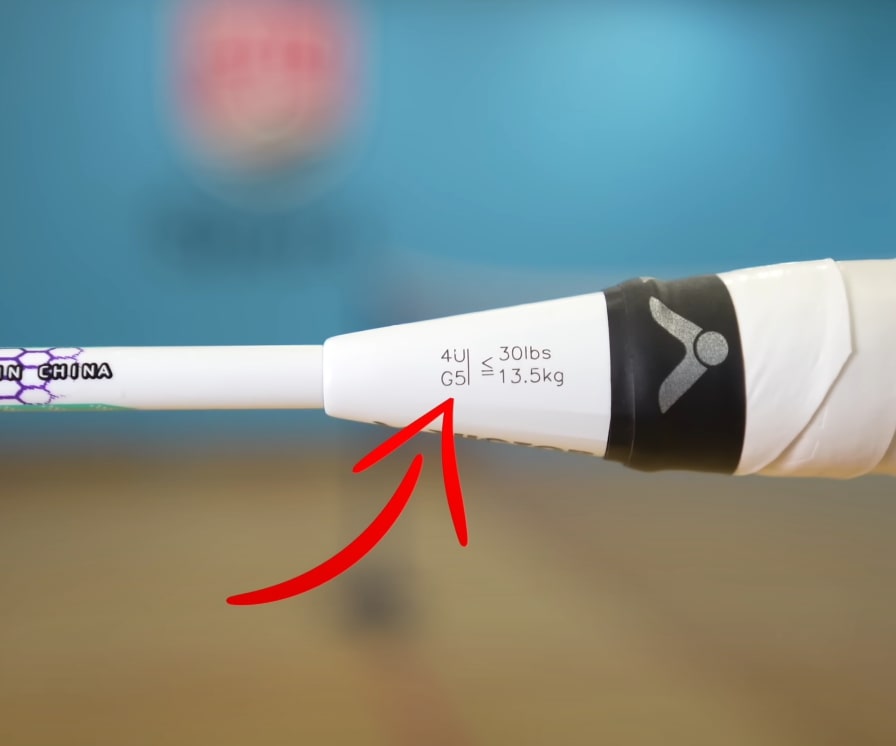How To Choose A Badminton Racket - 4 Step Framework
With over 200 badminton rackets available to buy, it can be quite confusing to navigate and choose the best one for you!
We have a 4-step framework to ensure you know how to choose a badminton racket that is best for you:

We’ll now go through each step of this framework in more detail!
Step 1) Consider Your Attributes As A Badminton Player
Firstly, there are two things to consider about yourself as a badminton player:
- Your ability – are you a beginner, intermediate or advanced player?
- Your playing style – what are your strengths on the court, and what do you want to get out of your racket?
We will explain why these matter in the next 2 steps.
Step 2) Consider The 3 Main Features Of A Badminton Racket
Feature 1 – The Flexibility Or Stiffness Of The Racket
Every racket will sit on a continuum from flexible to stiff. To find this out you can look at the written specification of the racket.

For beginners, you’re less likely to be generating high swing speeds, meaning that the racket shaft won’t bend as much during your shots. So opting for a more flexible racket can help with this since you can focus more on your technique and less on trying to get power in your shots.
For more advanced players, we’d recommend a stiffer racket as they tend to require a faster swing action and a good technique to generate the power needed. The shaft also doesn’t bend as much when you’re hitting the shuttle, helping to improve the accuracy and control of your shots.
💡 TOP TIP: If you tend to have shoulder problems, a more flexible racket might be the better option since they are usually more forgiving on the shoulder!
Feature 2 – Balance Or Weight Distribution Of The Racket
The balance of a badminton racket also sits on a continuum from head heavy to head light. Again, this will be indicated in the specification of a racket either online or even on the racket itself.

Choosing the balance of your racket is where your playing stye comes into consideration. For example, if you’re an attacking singles player or the rear court player in doubles, a head heavy racket will help you get more power in your smashes.
However, if you’re a net player or like to play a fast or flat game, a head light racket can help you have a faster racket manoeuvrability in these situations.
You may even want to gain an advantage in your weaker area by opting for the opposite of your strength – it’s ultimately up to whatever you decide will suit you better!
💡 If you play both singles and doubles, you shouldn’t be using different rackets for different events as it’s very difficult to get used to the feel of two different rackets! The negatives of switching between different rackets will outweigh any positives!
Feature 3 – The Weight Of A Badminton Racket
Badminton rackets often have their own way of classifying weights, which is what the number with the letter ‘U’ at the end is for.

There are 5 different weight categories, 6U is at the lightest end with rackets typically weighing between 70-75g, and 2U at the heaviest end with rackets typically weighing between 90-94g.

In general, 6U and 2U rackets aren’t very common, and 4U and 3U are definitely the most common options!
💡 FUN FACT: There are technically 1U rackets too, but these tend to be training rackets to help improve your strength rather than being an actual playing racket!
If you are:
- A beginner or junior player – you would usually choose a lighter racket as they are more forgiving on the shoulder if you’re not used to playing regularly or if you haven’t developed your power or technique yet
- An advanced player – you typically wouldn’t use a racket any lighter than 4U
If you’re struggling to quickly manoeuvre your racket, it may be partially because your racket is too heavy! Of course we need to mention that you can also train your ability to do this via some purposeful practice – don’t place too much importance on the racket!
Step 3) Consider 3 Further Features Of A Badminton Racket
1 – Grip Size
This is what the number with the letter ‘G’ on your racket means.

The most common sizes are G4, G5 and G6, and the bigger the number, the smaller the grip!
If you’re unsure and do have the choice of grip size, we’d typically recommend going for a thinner grip as you can easily add extra grip or cushion wrap to make it thicker but you can’t make it thinner! However if you do add extra grip or cushion wrap, it can change the balance of the racket – so consider this too.
You’d also want to go for a thinner grip if you have smaller hands so you can change between the different grips easier.
2 – String Tension
Brands will often advise what the maximum string tension is that you can string a particular racket at:

But how does this affect what racket you should buy?
Well, if you’ve narrowed it down to 2 similar rackets in terms of the flexibility, balance and weight, then if you prefer the higher string tensions, it might be better to choose the racket that has a higher maximum string tension! We’ve written an entire article on what string tension to choose, which you can check out here!
💡 The higher the tension you put on a racket, the more pressure you put the racket through, which increases the chance of the frame breaking. So do be careful!
3 – Price
Generally, the more you pay, the better racket you will get since there will be more technology in it.
Lower-priced badminton rackets are usually lighter and more flexible which are therefore more suited for beginner players, who won’t necessarily benefit from a top range racket!
So rather than just choosing the most expensive racket, or what you like the look of the most (tempting, we know!), or even what your favourite player plays with, it’s important to make sure you pick the right badminton racket for your unique playing style and ability!
Step 4) Test Out The Racket!
We know this isn’t always possible, but even if you can test a friend’s racket for just 5 minutes, you’ll be able to get a good idea if it’s the right racket for you. Make sure you hit a variety of shots and do different routines if you can so that you can get an all-round feel of the racket!
For some good routines to do, you can check out the article here where we go through several different 1v1 practices with demonstrations.
Learn More
We hope you found this information useful and that you now know how to pick the right badminton racket for you!
Lastly, to see us go through this same 4-step process and choose which racket is best for us, you can check out our full YouTube video below!


Great article, a very clear and concise explanation! Thank you!!
Thank you Frank, glad you enjoyed it!
All information is really good. I hope this article will be really help for all beginner badminton players.